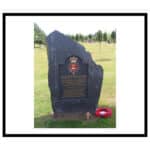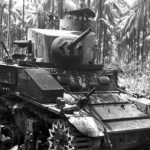The Princess Mary Gift Box of 1914
The Princess Mary Gift Box of 1914 was a brass tin containing various items intended as a Christmas gift for members of the British Armed Forces during World War I.
The initiative was launched by Princess Mary, the daughter of King George V, in October 19141. It was intended as a Christmas present to those serving at Christmas in 1914 and was paid for by a public fund backed by Princess Mary.
It was Princess Mary’s express wish that ‘every sailor afloat and every soldier at the front’ should have the present.
The gifts were devised in October 1914 and intended for distribution to all who were serving overseas or at sea, in time for Christmas 1914.
It was anticipated that the majority of eligible recipients would receive an embossed brass box, one ounce of pipe tobacco, twenty cigarettes, a pipe, a tinder lighter, Christmas card and photograph but quite early on the Committee in charge received strong representations that an alternative gift should be made available for non-smokers.
Princess Mary’s original intention had been to pay, out of her private allowance, for a personal gift to each soldier and sailor. This was deemed impracticable and a proposal was made that she lend her name to a public fund, which would raise the necessary monies to provide the gift.
The fund raised over £152,000, and the gifts were distributed to millions of service members, both at home and abroad. The Princess Mary Gift Box remains a poignant symbol of the nation’s gratitude and support for its military personnel during the war.

After some discussion the Committee agreed that non-smokers should receive the brass box, a packet of acid tablets, a khaki writing case containing pencil, paper and envelopes together with the Christmas card and photograph of the Princess.
The Committee was also obliged to consider the tastes of other minority groups and it was recognised that if the dietary rules of various religious groups were to be respected, changes would have to be made in the gifts intended for Indian troops.
It was decided that The Gurkhas were to receive the same gift as the British troops; Sikhs the box filled with sugar candy, a tin box of spices and the Christmas card; all other Indian troops, the box with a packet of cigarettes and sugar candy, a tin box of spices and the card.
The smokers’ and non-smokers’ gifts were both deemed unacceptable by the Committee for nurses at the front in France who were instead offered the box, a packet of chocolate and the card.
However, suppliers of the content items had trouble and it was realised that there were still not enough to go round. The Committee resolved the problem by hurriedly buying in an assortment of substitute gifts: bullet pencil cases, tobacco pouches, shaving brushes, combs, pencil cases with packets of postcards, knives, scissors, cigarette cases and purses.
Those sailors who should also have received the lighter as part of their gift, were given instead, a handsome bullet pencil in a silver cartridge case which bore Princess Mary’s monogram. The ‘pencil bullet’ was not fashioned out of real bullet parts – it was simply a pencil with a rounded white metal end that looked like an unfired round when stored inside a brass tube resembling a cartridge case.
The Princess Mary Gift Boxes were given for several meaningful reasons, such as:
- Boost Morale: The gifts aimed to bring comfort and joy to soldiers and sailors during the challenging circumstances of World War I, especially during the festive season.
- Show Appreciation: It was a way for the nation to express gratitude and appreciation for the sacrifices and bravery of military personnel.
- Maintain Connection: The gift box served as a tangible connection to home, reinforcing the emotional support of loved ones and the public back home.
- Universal Gesture: Providing a gift to every service member was a powerful symbol of unity and collective support from the entire nation.
The initiative was more than just a gift; it was a heartfelt gesture to lift spirits and show solidarity during a difficult time.
The final number of boxes produced was over 2.6 million.
Modern reproductions are made of the boxes, though not to the same standard as the originals – typically the brass plate is thinner, and they are not airtight!




